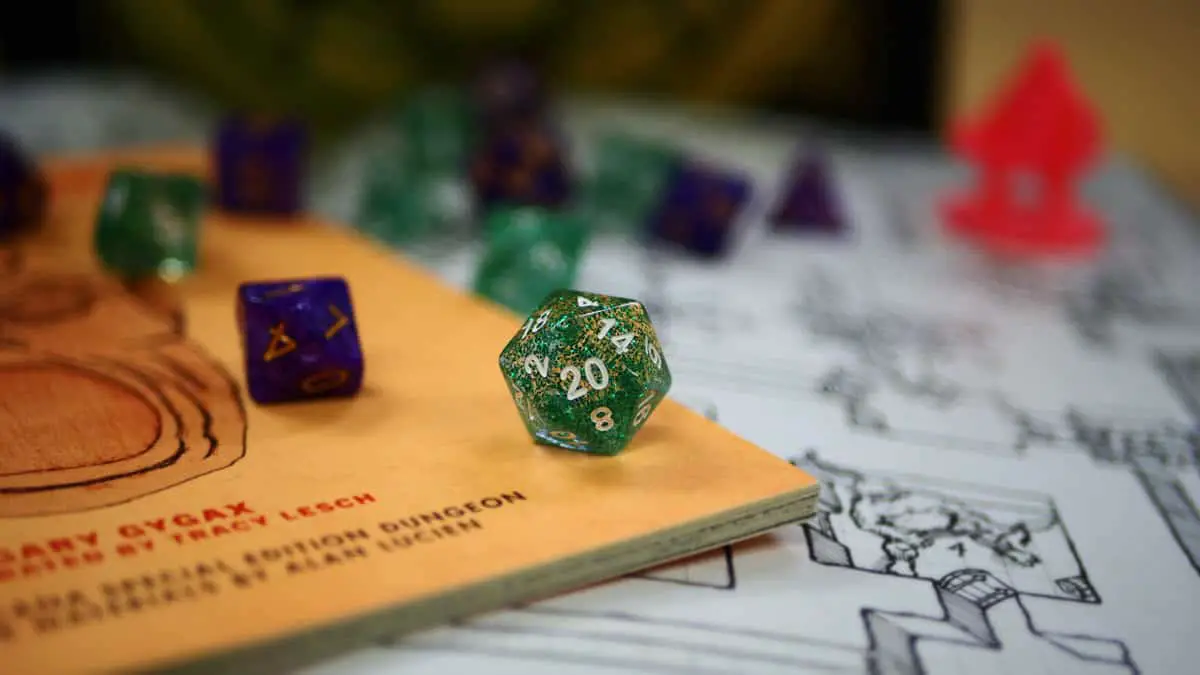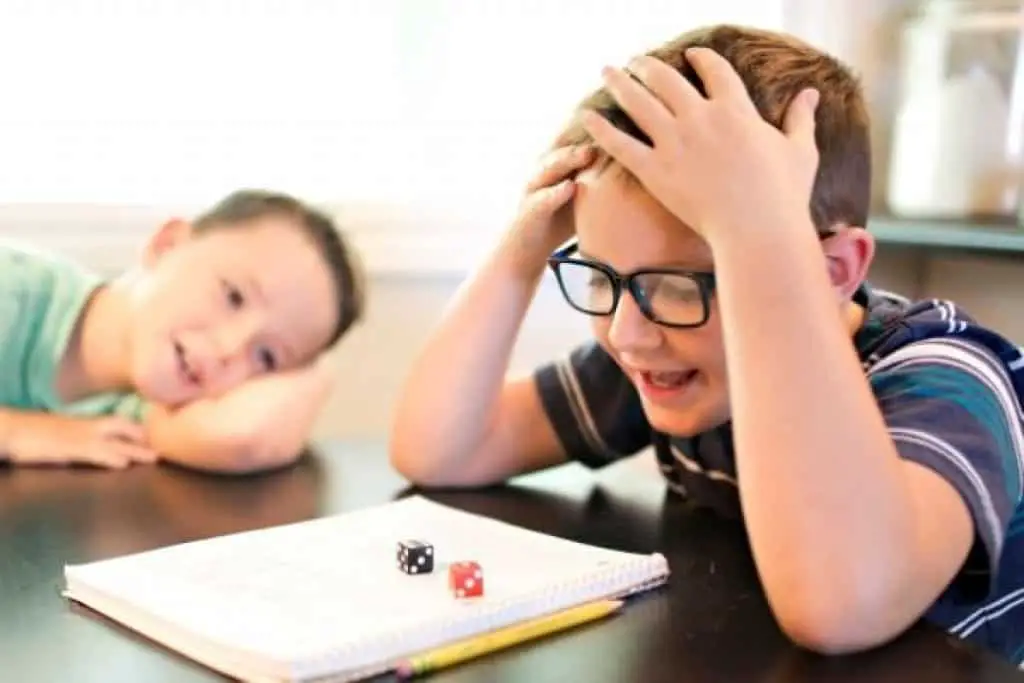Educational Benefits of Dungeons & Dragons
What if the best learning tool was a set of special dice?
Dungeons and Dragons has never been more popular. However, most parents and teachers dismiss it as a fun distraction rather than a learning tool.
That’s unfortunate because Dungeons and Dragons is one of the most educational games ever created. It develops and fosters academic skills, social skills, and soft skills in a way that the traditional classroom cannot.
Are you wondering what D&D has to teach children? Keep reading to learn about the educational benefits of Dungeons and Dragons, and what it means for the future of education.
Related post: 5 Critical Thinking Skills in Dungeons & Dragons
The Power of Math
Dungeons and Dragons can help to foster and reinforce many education skills. Perhaps the most obvious of these skills is mathematics.
If you’ve ever played Dungeons and Dragons or any other dice-based RPG, you’ll know that math is a major part of the entire experience. Players must add the results of the dice they roll to various stats to determine if characters successfully do things like hitting their targets, overcome a challenge, or see a hidden foe.
Regular gameplay can help reinforce these basic math skills among those who struggle with mathematics. And D&D can also serve as a crash course in statistics as players see the likelihood of certain rolls.
Let’s just put it this way: an 18% chance of something isn’t nearly as low as you think. And playing Dungeons and Dragons will make that abundantly clear!
Read All About It
What’s the first thing that many children will tell you about reading? Simple: They don’t like to do it!
Most children who say this don’t have much reading experience outside of what is assigned in school. And it’s tough for just about anyone to get excited about schoolwork.
However, D&D has a ton of reading built directly into the game model. Players must read the intimidating book of rules to simply understand how to play. And they must read even more supplementary material in order to understand the fictional world they are in and generate a suitable character.
So, why would a child be likelier to embrace reading here when they hate it in their school books? For some students, the fantasy setting is enough of a “hook” to entice them. It’s cooler to read about the misadventures of orcs, for example, than preparing a book report on Ethan Frome.
Moreover, reading all of this serves as a “price of admission” for fun gameplay and unforgettable socialization with friends. Even those who hate reading are going to dive in so they can reap the benefits and start playing.
And once they’ve tackled the small mountain or reading involved with Dungeons and Dragons, they are going to have a much easier time with the short stories and novels they are assigned in school.
Building Up “Soft Skills”
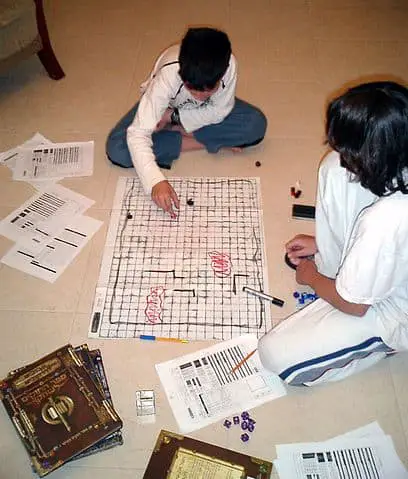
What do you think employers want the most from new employees? Believe it or not, things like a college degree and academic accomplishments are secondary to “soft skills.”
What are soft skills? These include things like communication, teamwork, adaptability, time management, and collaboration.
The reason these skills are so in demand among employers is that they aren’t taught in the classroom. Classroom education focuses on things like problem-solving and scientific knowledge. But it’s an open secret that some of the most “book smart” people out there are very awkward when it comes to communication and socialization.
Dungeons and Dragons can change all of that because children will utilize most of these soft skills in any given session. For example, players must communicate to do everything from further the story to throwing out suggestions. And players must collaborate and work with one another to develop some winning strategies.
The average Dungeons and Dragons game may not look very formal. Visually, it probably looks like a cluster of players, books, models, and snacks. But each of these game sessions is a master class in soft skills.
Critical Thinking Skills
What are the two magic words of modern education? “Critical thinking.” While educators, students, and parents alike understand that critical thinking is important, it is a very difficult concept to teach.
The beauty of Dungeons and Dragons is, players are encouraged to think critically at almost every juncture of the adventure. Unlike video games, players can create their own paths, customize their weapons, and solve problems in any number of creative ways.
Imagine characters who are beset by a flaming demon. How will they overcome this threat? Is it a matter of fighting the demon, marshaling support from villagers, or magically stripping the creature’s power away?
In short, players have an infinite set of options when it comes to solving any given problem. It’s just a matter of finding the option to create the best possible outcome in the shortest amount of time.
And if you ask us, that’s what critical thinking is all about!
The Power of Gamification
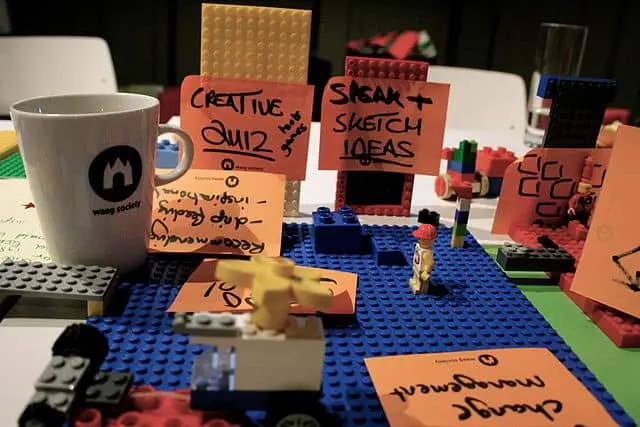
“Gamification” is a word that you’re going to keep hearing more of. Why? Because you can see gamification wherever you look.
Let’s take smartwatches, for example. These watches help transform things like physical fitness into a game, complete with daily goals and digital trophies. Other developers have taken this concept to the next level, creating apps that turn your daily run into a frantic escape from hordes of zombies.
Mechanically, nothing has changed about what you are doing. A run is a run, app, or no app. But gamifying the run helps turn a boring slog into something interesting and exciting.
In short, turning complex and difficult tasks into a game encourages people to develop skills. And we can already see how well Dungeons and Dragons has worked on this front in an actual classroom.
For example, educator and researcher Alexandra Carter developed a modified version of Dungeons and Dragons and used it as part of a year-long program to teach third-graders their core subjects. According to her, “I was able to see progress in all of the students… and was especially impressed with the work that those who struggled the most produced.”
What led to this happy result? Students could immediately see how what they learned applied to their game. This is different from the traditional school approach in which even the best students must ask themselves, “when will I ever actually use this knowledge?”
Social-Emotional Learning
Earlier, we touched on how Dungeons and Dragons can help foster the “soft skills” that students. On top of that, the game serves as a great way to develop social-emotional learning among students.
What is social-emotional learning? Broadly speaking, this is how children develop things such as self-confidence, empathy, self-awareness, and self-control.
The concept of SEL learning is important to educators because it helps predict how well children will perform in school. Unfortunately, outside of student-centric schools (like Montessori schools), students don’t typically get an opportunity to build their social-emotional learning up.
The South Jersey Sudbury School is a student-centric institution founded by Brian Foglia. This school has experimented with using D&D as a teaching tool, and they’ve discovered that the game helps build up the social-emotional skills that students have been lacking.
According to Foglia, “The ability to imagine, design, and role-play a character who has a background from an imaginary universe with its rule context is immensely sophisticated…Practicing this confers many emotional benefits, including increased empathy skills, negotiation, problem-solving, teamwork, and social maneuvering. These are all immensely valuable skills in the adult world, as well as for children.”
The chances are, D&D isn’t part of your child’s regular curriculum. But by taking up this hobby, your child can develop the SEL skills that will help them excel in the classroom. And like the kids on Stranger Things, this game has the potential to bring diverse groups together.
Interdisciplinary Learning Unlocked

Another major buzzword in education is “interdisciplinary learning.” This refers to students learning different skills in different classes and then finding creative ways to put everything together.
Why is this important? Most modern education focuses extensively on a single subject. For example, you go to one class that focuses only on math, and you go to another class that focuses on geography.
Ideally, students will eventually learn to synthesize this knowledge and these skills in a variety of practical ways. In reality, though, most students have trouble doing this because they don’t get an opportunity to practice this kind of multidisciplinary problem-solving.
Kade Wells, a teacher who runs a D&D club for the Davis Ninth Grade School near Houston, discovered that this game is a perfect way to both develop and practice those skills.
What do children actually learn from the game? According to Wells, “Geography from maps, recursive math from dice rolling and adding/subtracting modifiers, philosophy, logic from the ever-present need for decision making, science in regards to the ecology of an environment, the weather, the climate of different terrains, as well as many scientific details learned from monsters, which were almost all taken from mythology or reality in one way or another.”
Every one of these skills comes into play during D&D. And players can see an immediate benefit from the application of these skills, encouraging them to learn more and ultimately do better in the game.
STEM Training
STEM remains the hottest topic in education today. The general thinking is that a greater focus on science, technology, engineering, and math will better prepare students for success in their future careers. On top of that, the extremely practical nature of these subjects helps foster a sense of exploration and discovery when it comes to learning.
You might think that D&D is the last place where STEM comes into place. After all, this fantasy world has no technology and very little engineering. The mathematics is relatively simple, and the science of the game is tempered by the fantasy setting.
However, part of the magic of Dungeons and Dragons in the classroom or outside of it is that players can lean into their particular strengths. Successful gameplay often involves finding creative ways to utilize the environment, character abilities, and unexpected enemy weaknesses. And individual educators are conducting more of their own studies on role-playing games each year.
Someone playing as a mage, for example, might be content simply to zap enemies with a lightning bolt. But a player with a STEM background may get clever and turn plate armor into a magnet with their lightning bolt, effectively bringing hostilities to an end.
Similarly, someone with an in-depth knowledge of biology might find creative ways to overcome various monsters based on what they know about the creature. This might include temporarily blinding cave-dwelling creatures with a bright blast or clever discerning ways to track an otherwise impossible foe by its unique scent.
The game is mostly about fantasy and imagination. But the ability to integrate actual scientific knowledge can be very appealing to any STEM student.
And because D&D is a social game, each session can become a learning experience for someone without a STEM background. And anything they learn is going to be much more vivid and easy to remember than something from a musty old textbook.
Personal Growth
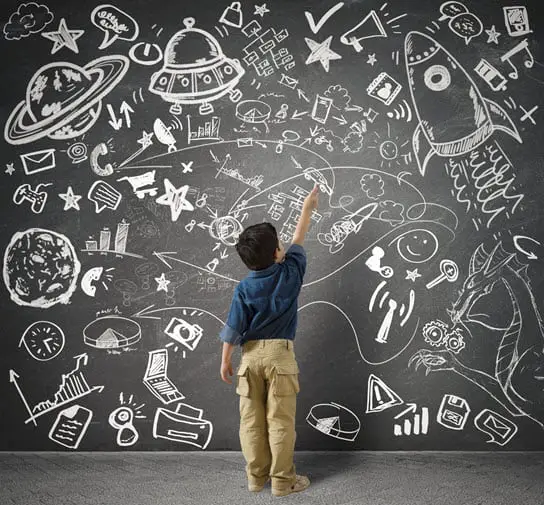
Some parents find the educational system frustrating because it doesn’t focus much on personal growth. For example, classes focus on developing and utilizing assorted problem-solving skills. But there are few lessons about how to mature, how to analyze your own emotions, and how to grow from both triumphs and setbacks.
This is–you guessed it!–another area where D&D unexpectedly shines. On the most basic level, it serves as a way for players to externalize some of their own qualities. And despite the exotic interior (such as an elf or an orc), you can usually see the player’s personality shining in some way.
Emily Gaudette noticed this when DMed sessions involving family members. She describes her brother as a person who often has trouble figuring out and expressing what is bothering him. However, they both had a kind of breakthrough when he began to design his character.
Her brother told Emily, “My character is really hyper and gets excited, and other people sometimes think he’s annoying. But if you get past that, you’ll see that he’s a good guy.” She could see right away that her brother had taken stock of his strengths and weaknesses in order to generate a D&D avatar of himself.
And what do these characters do? They interact with others, go on adventures, and grow from their own experiences. A character gives players a chance to analyze their own behavior through an external lens and grow from this analysis even as that character levels up.
This unprecedented opportunity for personal growth is why so many teachers have embraced role-playing in the classroom. And their students inevitably reap the educational benefits of Dungeons and Dragons.
Frequently Asked Questions
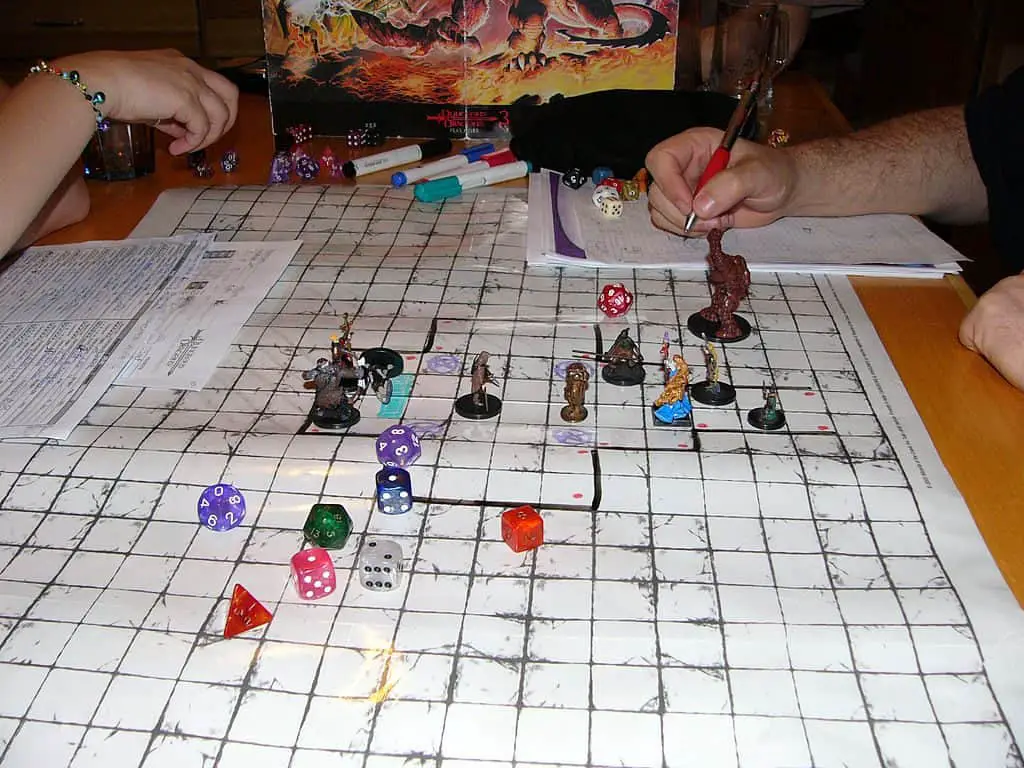
Is it hard to learn Dungeons and Dragons?
In many ways, the easiest place to start playing Dungeons and Dragons is inside the home. However, many parents have a simple question: “is it hard to learn how to play Dungeons and Dragons?”
The honest answer is “yes and no.” If you were to try to memorize the core rulebook end to end before playing, then it would be very difficult indeed. But most people start with the simple adventures in the official Starter Sets and then work their way to more complex adventures.
As a DM, you can make things a bit easier by using pre-made adventures and modules. These will give you stories, maps, and enemy stats, which makes everything much easier.
Finally, don’t forget that the game is simply a vehicle to have fun, learn, and grow. You can toss out or modify any rules you want, and you can explore a number of fan-made “simplified” versions of the game that may be easier for parents and children alike.
What if a child can’t find friends who play?
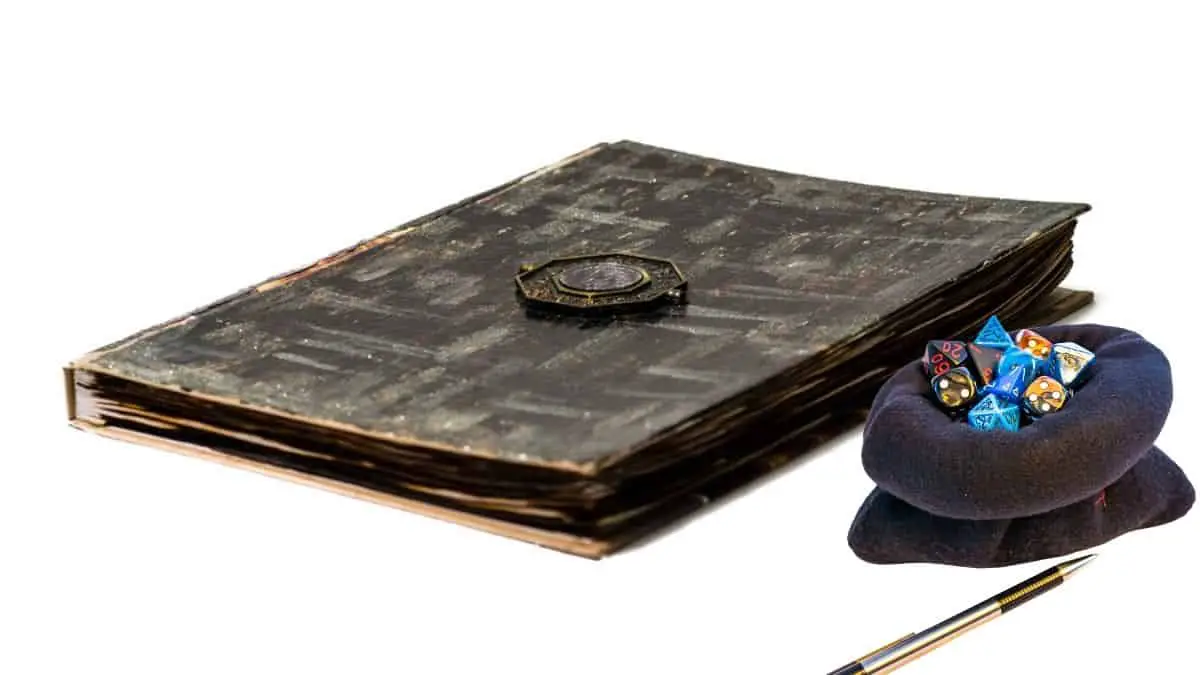
Arguably, the most common way that children play D&D is with their friends. But what if a child can’t find any friends who play?
One solution is to visit your friendly local game store. Chances are they have official events, and some of them may be more geared towards children. If nothing else, the store may be able to help someone locate local players of a similar age.
Another solution is to look for any local, or school clubs focused on RPGs and/or D&D. If no such club exists, the child can create one. Trust us: schools and communities love educational role-playing games!
Finally, the child can play with people around the world using apps like Roll20. This way, the young player can enjoy the educational benefits of Dungeons and Dragons without leaving the house!

